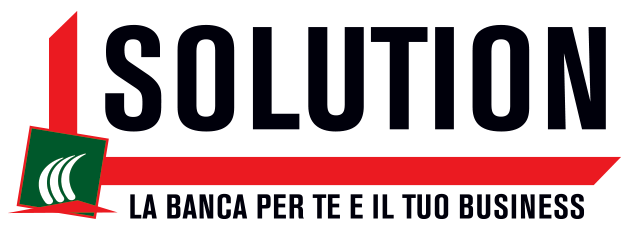
January 2021
As of January 1, 2021 Solution Bank applies the new European rules on the classification of counterparties in default of an obligation to the bank (the so-called “default”) introduced by the European Banking Authority (EBA) and implemented at the national level by the Bank of Italy.
The new discipline, known as the “New Definition of Default”, establishes more restrictive criteria and methods for default classification than those adopted up to now, with the aim of harmonizing regulations between the various countries of the European Union.
Knowing the new rules is fundamental in order to avoid being classified as a default even for a current account overdraft or for small payment arrears.
The new rules apply to both companies and individuals who have access to credit and provide that the bank will automatically classify the exposure in “default” in the event of arrears in payment of principal, interest or fees for an amount exceeding both of the following thresholds for more than 90 consecutive days:
- in absolute terms: 100 euros for retail exposures (Individuals and SMEs) and 500 euros for other exposures;
- in relative terms: 1% of the total amount of all the client’s exposures to the bank.
The regulations no longer allow for netting. The bank is obliged to classify the customer as being in default even if there are funds available on other unused lines of credit.
Moreover, the new regulations introduce a new threshold for classification as default in cases of rescheduling of the credit line due to the client’s financial difficulties (granting of forbearance measures – moratorium). If, as a result of rescheduling, a loss of more than 1% occurs, the bank is obliged to classify the customer as being in default.
With the new rules, in the case of joint credit obligations (e.g. joint ventures in which two or more debtors are jointly responsible for repayment of the same), the default of one debtor does not automatically extend to the joint ventures. In the event that all jointly exposed debtors are classified as in default, the joint obligation is also automatically considered in default; similarly, if the joint obligation is classified as in default, the obligations of all the individual debtors are also considered in default if the joint obligation is significant in relation to the total exposures of the individual joint holder.
With reference to the default of a partnership, classification as default automatically applies to exposures to partners with unlimited liability for the obligations of the partnership.
In order to restore the position in bonis, it is necessary to regularize the arrears with the bank and remain in a state free of credit anomalies for at least three months.
The Solution Bank branches are available to provide maximum support in this important phase of change, provide clarification on regulatory changes and identify the most suitable solutions to customer needs.
 LA NORMATIVA DI RIFERIMENTO
LA NORMATIVA DI RIFERIMENTO
- European Union Regulation of June 26, 2013 – no. 575 – art. 178 – introduces specific provisions on the default of a debtor
- European Union Delegated Regulation No. 171 of October 19, 2017 – defines the criteria for setting the materiality threshold, which supervisors will have to comply with
- Recommendation of the European Commission 2003/361/EC of May 6, 2003 – definition of small and medium-sized enterprises.
- Guidance EBA/GL/2016/07 – EBA guidance on the application of the definition of default under Article 178 of Regulation (EU) No. 575/2013
- For further information, please consult the Bank of Italy website: https://www.bancaditalia.it/media/notizie/2020/qa-nuova-definizione-default/index.html
